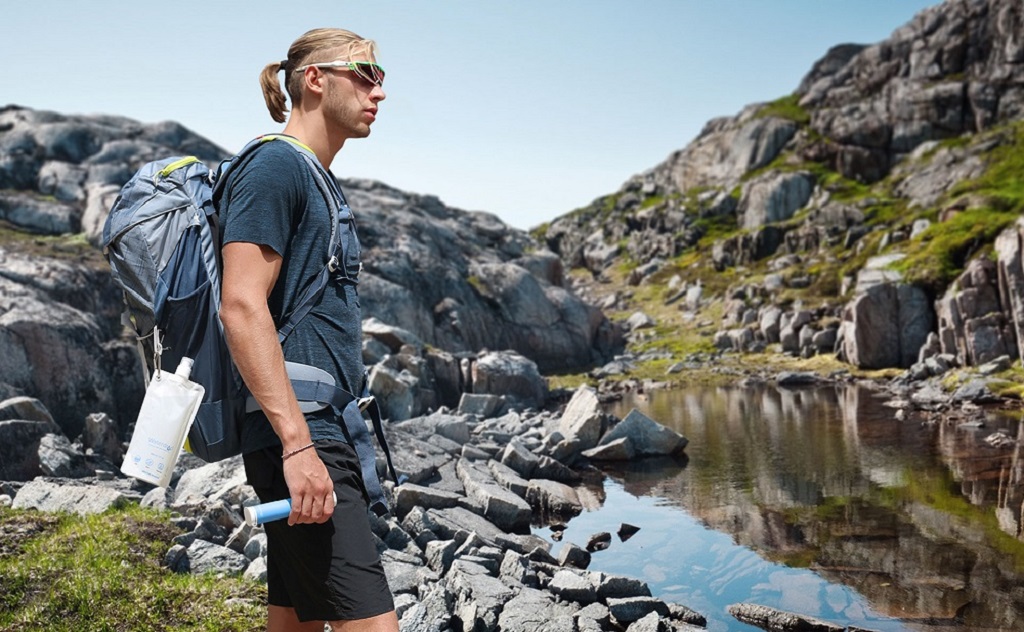Are you going to explore the great outdoors? It's really important that you plan for your water needs as drinkable water may not always be available, especially in the hinterland and out-of-doors areas. It's never recommended to drink water from a natural source that hasn’t been purified, even if the water looks clean.
Is nature water safe to drink
River, stream or lake water may look clean, but it can still carry bacteria, viruses, and parasites that can result in waterborne illnesses, such as cryptosporidiosis or giardiasis. This blog exactly tell you that how is river water contaminated: How Does Drinking Water Become Contaminated?
So, it's essential that you purify natural water. Purifying water involves filtering to remove large impurities and treating by boiling or with chemicals to kill organisms such as bacteria, viruses and parasites.
When you decide to use natural water as the water source, there are several hazard zones that you should avoid.
Avoid the danger zones
Avoid collecting water from sources that are downstream of
- Camping areas
- Areas where mining has happened
- Agricultural areas
- Unsewered dwellings and towns
Then follow some common sense rules to choose the water source
- Check how it looks. The appearance of the water isn't a guarantee that it's safe to drink, but the water that's clear, free of surface scum or debris, and has no odor is more likely be to free of pollutants than cloudy, funky water that has visible surface scum.
- Choose water that's free- flowing rather than water that's stagnant or still.
Treat natural water before you drink it
There are several approaches to purifying water. The three typically used tactics are boiling, chemical treatment and water filtering. Which you choose will depend on a number of factors, including portability, so some research is advised before choosing a particular solution.
Boil your water
Boiling water is a simple and secure manner of killing off bacteria etc, but it'll not clean sediment or chemical pollution from the water. Because the water should be boiled for at least five minutes for effective sterilisation it'll also use up a lot of energy.
If you’re at an elevation below 6,500 feet, place the water in a container over a heat source, a campfire or propane stove, for example, and let it boil for 1 minute. If you’re at an elevation over 6,500 feet, please allow the water to boil for 3 minutes.
Chemical disinfection
Chemical disinfection involves adding one or another chemical to your filtered water that are effective at killing waterborne organisms.
Chemical tablets or liquid drops are the most common ways to disinfect natural water. Iodine or chlorine dioxide are the most much-used disinfection agents. National Sanitation Foundation (NSF) approved products are recommended.
Follow the manufacturer’s instructions for disinfecting the water. Contact time to disinfect the water varies from product to product (for example 30 minutes to 4 hours). However, it'll be more effective to pre-filter the water before disinfecting, If the water is cloudy or has floating debris.
Water filtration system
There's a wide range of filtering systems available, with performance and life span determined by a number of factors. Best to check out available options before making a choice to suit your outdoor water needs.
The portable water filter straw is a really popular choice for outdoor use. It's normally pretty compact and lightweight. The straw design of the filter allows you to drink directly from the water source without any further tools. You can also store the clean filtered water in your water bottle by connecting it to the water filter straw.
The filtration precision for the water filter straw is usually around 0.2-0.1 microns, which is effective in getting rid of parasites, protozoa, viruses, and bacteria.
This type of water filtration system is ideal for hiking, camping, domestic and foreign trip, emergency preparedness (tornadoes, rainstorms, earthquakes, floods, etc.) to meet the outdoor water demand in a variety of situations.
Conclusion
All and all, be sure to do outdoor study in advance to ensure you are ready to find and treat water in the wild. If you are heading out into the wild. Do not drink unprocessed water from the wild no matter how clear or clean it looks. It's simply not worth the risk!




